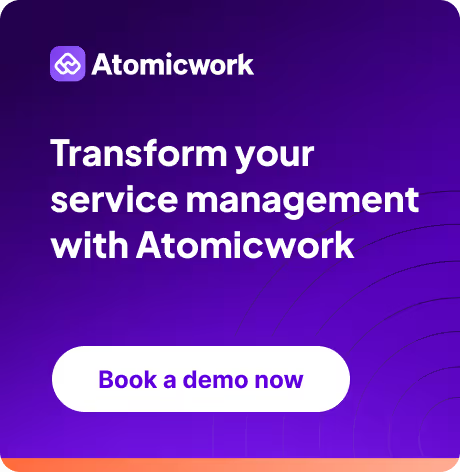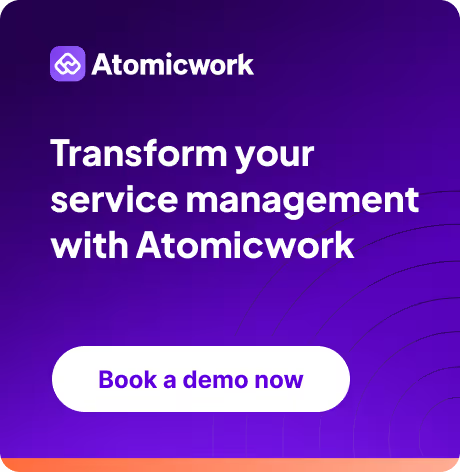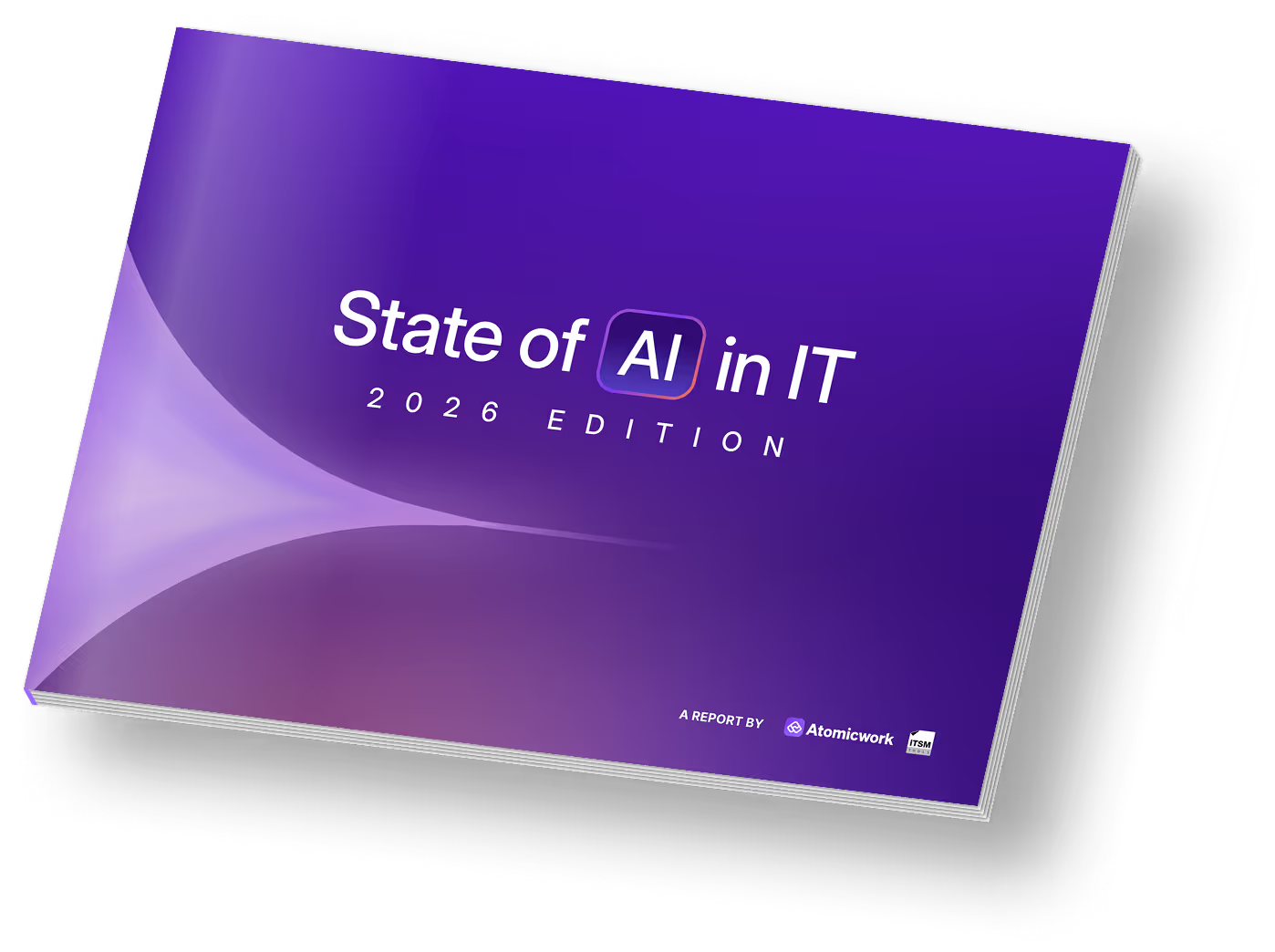Understanding AI agents in 2025: A CIO’s guide
Let's admit it: AI agents are not just buzzwords; they are office overachievers. They are the co-workers ready to work 24/7 and care for your complicated enterprise processes.
Automating boring stuff– they’ll do it.
Helping busy human agents answer your team’s queries instantly? AI agents will do it.
They are your team's best friend.
A Gartner survey states, “By 2028, 33% of enterprise software applications will include agentic AI, up from less than 1% in 2024, enabling 15% of day-to-day work decisions to be made autonomously.”
An AI agent is a tech powerhouse that redefines how businesses function, helps cut costs, streamlines operations, and allows you to stay ahead of the competition. They increase employee productivity while maintaining your budget and cater to employee needs and queries—all to simplify your life.
And that’s why CIOs should care about AI agents.
This guide will help you, the CIO in charge, understand AI agents and how they can help enterprises grow.

What are AI agents?
An AI agent is a software program that can independently interact with its environment, collect data, and use it to perform various specialized tasks. The AI agents autonomously decide the best action required to fulfill the goals set by humans by learning from past interactions and planning the next series of actions.
What AI agents can do is, given the right context, they can essentially plan and execute a bunch of tasks that lead to a certain goal. It has long-term memory, where it stores past resolutions that your team has given. It has short term memory where it understands the nature of the issue from the user conversation. It also has access to a set of actions. So based on it's short-term memory, long-term memory, and actions, it can plan and decide the recommended solution. - Shankar Ganesh, Founding team - Product @ Atomicwork
It relies on Large Language Models (LLM), Machine Learning (ML), and Natural Language Processing (NLP) to handle various tasks, such as data processing, making predictions, generating human-like responses, and automatically performing repetitive tasks.
For instance, an AI agent in an organization automates service requests by making knowledge resources readily available to the employees. This approach makes employees self-sufficient and helps IT agents allocate more time to solving complex queries and incidents.

How do AI agents differ from traditional AI?
AI agents differ from traditional AI in several ways.
Here's how:
1. AI agents are autonomous
Unlike traditional AI systems that rely on predefined rules and human oversight, AI agents operate autonomously. They gather data, make real-time decisions, and perform tasks independently without human input. Traditional AI, on the other hand, heavily depends on human input.
2. AI agents’ actions depend on specific goals
Traditional AI tools focus on executing specific tasks following human instructions. On the other hand, AI agents dynamically determine which actions are required to achieve the overarching goals set by humans.
3. AI agents adjust their behavior based on situations
Unlike traditional AI systems confined to static datasets, AI agents interact with their environment. They collect data and adjust their behavior and actions as the conditions change.
4. AI agents are evolving consistently
Traditional AI systems require retraining and reprogramming when new data arise. AI agents continuously learn and analyze the data from their environment to improve performance and offer better outcomes.
Related resource: Leveraging AI workflows in enterprises
Why do businesses need AI agents?
Businesses use AI agents as they offer a wide range of benefits, significantly improving their operations, decision-making, and productivity.
Here are some key reasons why AI agents are valuable across domains:
1. IT service management
AI agents automate routine tasks like system monitoring, ticket management, and troubleshooting. They can respond to service requests, resolve common issues, escalate complex problems to human agents, reduce downtime, and improve service delivery. This reduces manual intervention and enhances response times.

2. Enterprise support use cases
AI agents expand beyond IT and automate and improve service delivery across HR, finance, and legal departments. They enable teams to manage service requests, handle employee workflows, and process approvals without IT support, increasing business agility and freeing up time for high-value work.
3. Data analysis
AI agents can sift through large amounts of data in real-time. They can identify patterns and trends and provide actionable insights faster than traditional methods. This improves business decision-making powered by data and analytics, such as sales forecasts, customer behavior, and risk management.
4. Streamlines operations and reduces costs
AI agents automate repetitive tasks, reduce manual efforts, and handle large-scale operations efficiently. This optimizes workflows, increases productivity, and significantly saves costs, particularly for enterprises managing multiple service lines.
5. Improves decision-making and productivity
AI provides contextual answers, automates workflows, and manages employees' journeys, boosting productivity by providing them with real-time data assessment. This helps make the right, informed decisions and strategic actions to improve business outcomes.
Related resource: Benefits of enterprise AI service agents
How do AI agents work?
AI agents function like humans. They mirror how humans operate through a dynamic system.
Imagine an AI agent as a human with a mind, hands-legs, and a body to understand how AI agents work.

The mind - LLMs
LLM is at the core of the AI agent, where all the cognitive functions like reasoning, thinking, and decision-making happen. The LLM processes information, assesses the situation, and determines the best course of action to achieve the objectives,
For instance, when resolving a service request, the LLM analyzes the user inputs to understand and decide which specialized tool to call to fulfill that function.
The hands and legs – The tools
Just as the human body needs hands and legs to perform tasks, AI agents use various tools to interact with their environment. These tools include web browsers for information, databases for accessing data, and diagnostic tools for troubleshooting.
For example, if an employee reports a broken laptop, multiple AI agents spring into action: the Troubleshooting AI Agent asks clarifying questions about the issue, the KnowledgeRetrieval AI Agent fetches relevant guides and solutions, and if needed, the Routing AI Agent directs the case to the appropriate IT team. This coordinated response shows how AI agents use various tools to diagnose and resolve issues efficiently.
The body – The framework
The framework binds the mind and hand legs, allowing the AI agent to coordinate its actions effectively. It serves as the infrastructure that connects the decision-making process with appropriate tools, ensuring seamless task execution.
For example, when a user reports an issue, the AI agent decides which tools to use. The framework facilitates the connection to optimize the response time and accuracy.
In the real world, when an AI agent receives a service request, it initiates a dialog with the user to gather information. The LLM assesses this information and selects the appropriate tools to address the request. This streamlined process enhances efficiency and frees human resources to focus on more complex tasks.
Guidelines for CIOs implementing AI agents
Here are five critical guidelines for CIOs implementing AI agents.

#1 Identify high-impact use cases
CIOs should start by identifying processes where AI agents can deliver the most outstanding value. For instance, pasword resets typically cost organizations around $85,000 annually in productivity losses and IT overhead.
AI agents can significantly reduce these costs by:
- Automating user access provisioning for tools like GitHub, Salesforce, and Power BI
- Managing Azure AD account operations and group memberships
- Handling password resets and account unlocking requests
Beyond access management, high-impact use cases include:
- Service request automation in ITSM
- Employee self-service troubleshooting through connected knowledge bases
- Integration with enterprise apps (Microsoft Teams, Slack, Workday) for streamlined workflows
Start by pinpointing these high-volume, predictable tasks where AI agents can reduce manual efforts and speed up resolution times.
Related resource: 25+ AI agent use cases for enterprises
#2 Define where human oversight is needed
While AI agents can operate autonomously, it is crucial to define when human intervention is required. CIOs should establish guidelines for areas where critical thinking, empathy, and nuanced decision-making are needed, such as resolving complex IT issues or handling sensitive customer data. In ITSM, human involvement is crucial for escalation paths to ensure that AI agents take charge of routine tasks and that human agents manage critical or exceptional incidents.
#3 Narrow down the architecture and framework
The exemplary architecture is critical to implementing the AI agents effectively. CIOs must decide whether to use existing frameworks or develop custom solutions tailored to the organization’s specific needs. For example, Atomicwork’s customized multi agent framework enables businesses to build solutions that fit multiple internal workflows across departments. This offers better control and scalability compared to generic AI models.
The custom-built framework allows for better integration with the enterprise's existing tools and adaptation to evolving business needs.
#4 Address security and governance concerns
AI agents frequently interact with sensitive data, prioritizing enterprise security and governance. CIOs must ensure that the AI agent adheres to the data privacy laws and internal compliance guidelines by implementing robust access controls, monitoring, and encryption. For instance, Atomicwork emphasizes establishing clear data handling protocols to safeguard and protect data from breaches while maintaining how an AI agent uses the data. They employ responsible AI methods with continuous testing for prompt injections, leakage, model jailbreak, and safety evasion.
#5 Plan for large-scale deployment
Scaling the deployment of AI agents requires careful planning regarding reliability and performance. CIOs should ensure that agents can manage increasing workloads without compromising speed or accuracy.
Testing for performance bottlenecks, integrating fallback mechanisms, and continuously monitoring system health are key to maintaining uptime and responsiveness.
For instance, Atomicwork's AI architecture allows seamless scaling of AI agents across different enterprise environments, while delivering contextual interactions at scale.
Related resource: How Atomicwork's ensemble AI architecture is used to scale contextual interactions
Conclusion
While the current AI agents are yet evolving, they can easily handle your service requests and routine tasks and resolve common issues. They can provide predictive insights and become your strategic drivers.
Besides streamlining operations and helping reduce costs, they offer a competitive edge to future-proof your enterprise.
However, to successfully deploy AI agents, CIOs must align the organizational needs with AI agents to ensure they provide the right oversight, offer robust security, and can be scaled to handle growth. We've built Atom AI agents with these critical prerequisites in mind and we'd be happy to chat with you to help implement AI agents at your organization. Schedule a call with us to get started!
Frequently asked questions
Agentic AI is autonomous software that can make real-time decisions and perform tasks independently to achieve specific goals. Unlike traditional AI, it can interact with its environment, collect data, and adjust its behavior without constant human oversight.
An AI agent independently interacts with its environment to perform specialized tasks. It uses LLMs, Machine Learning, and NLP to process data, make predictions, generate responses, and automate tasks based on human goals.
AI agents can handle IT service requests, automate ticket management, process approvals across departments (HR, finance, legal), and manage employee workflows. For instance, they can autonomously several support use cases like handling password resets, software installations, and account management tasks.
ChatGPT is a conversational AI model and not an AI agent. While it generates human-like text based on inputs, it cannot autonomously make decisions or interact with the environment.
GenAI focuses on generating new output based on the input provided and the patterns it learned. Agentic AI autonomously performs tasks, makes decisions, and interacts with its environment. It is goal-oriented and makes real-time decisions to achieve the set goals.
More resources on modern ITSM






































